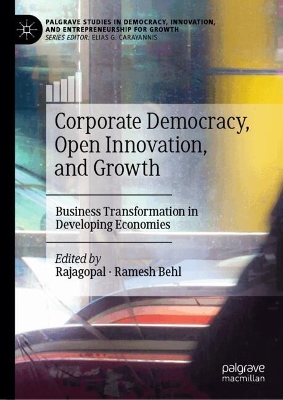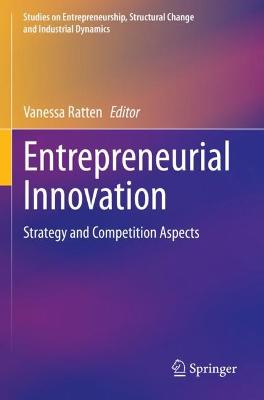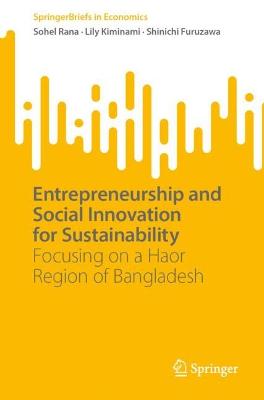Collective Dynamics and Territories
 portes grátis
portes grátis
Collective Dynamics and Territories
9 Issues for Competitive, Innovative and Sustainable Territories
Albert-Cromarias, Anne; Albertini, Therese; Terramorsi, Patrice
ISTE Ltd and John Wiley & Sons Inc
11/2024
240
Dura
9781786309303
15 a 20 dias
Descrição não disponível.
Introduction xi
Therese ALBERTINI, Anne ALBERT-CROMARIAS and Patrice TERRAMORSI
Chapter 1. Setting Up in a Rural Environment: A Sustainable Strategic Management Approach 1
Alexandre ASSELINEAU
1.1. Introduction 1
1.2. High stakes for territories... and companies 3
1.2.1. "Metropolization" and "clusterization" 3
1.2.2. Territory: a simple variable adjustment? 5
1.3. What is the strategic relevance of setting up in a rural environment? 7
1.3.1. Responsible strategic management and differentiation 7
1.3.2. The territory: the backbone of the strategic project 8
1.4. A textbook case study: the Institut de Tramayes 10
1.4.1. The project 10
1.4.2. Discussion: what is at stake? 12
1.5. Conclusion 13
1.6. References 14
Chapter 2. Organizing a Network of Actors to Preserve and/or Enhance the Common Resource 17
Christophe ASSENS and Francois COLENO
2.1. Introduction 17
2.2. Territory and the common resource 18
2.3. The common resources and the network 20
2.4. Two case studies on territories managing a networked common resource 22
2.4.1. A distributed network: the case of corn production in Alsace 22
2.4.2. A daisy chain network: a case study on the Noirmoutier cooperative 26
2.5. Conclusion 29
2.6. References 30
Chapter 3. Building Collective Environmental ActionWithin Territories 31
Camille FIORE and Solange HERNANDEZ
3.1. Introduction 31
3.2. Inter-organizational relations and air quality policies: an appraisal of collaborative strategic management 35
3.2.1. Managing stakeholders through a collaborative approach 36
3.2.2. Strategic collaborative management: which method? 38
3.2.3. Strategizing on-the-way management 40
3.3. Air quality improvement policies: development, implementation and limits 41
3.3.1. Building and implementing a territorial air quality policy through hybrid management 42
3.3.2. The strategic process: a mix of the collaborative approach and "strategizing on-the-way" 44
3.3.3. Difficulties encountered by stakeholders 46
3.4. Recommendations for managers 48
3.4.1. Fostering inter-organizational learning through forward-looking, cross-functional thinking 48
3.4.2. Joining forces to encourage greater government involvement in air quality issues 50
3.5. Conclusion 52
3.6. References 53
Chapter 4. Innovating and Regenerating Territories Through the Development of Ecosystems 55
Guillaume DETCHENIQUE, Magali MALHERBE and Thomas LOILIER
4.1. Introduction 55
4.2. Collective innovation in a territory 56
4.2.1. The ecosystem for innovation in a territory 56
4.2.2. Innovation mechanisms for a territory: proximity 59
4.3. Regenerating an ecosystem through territory: four lessons from the cider ecosystem in Normandy 60
4.3.1. Lesson no. 1: taking advantage of the ecosystem leader's departure 61
4.3.2. Lesson no. 2: building a common history and shared interpretation 63
4.3.3. Lesson no. 3: changing industry rules for innovation 64
4.3.4. Lesson no. 4: focusing on new collective projects 65
4.4. Unlocking an ecosystem through territory: four lessons from the NFC ecosystem in Normandy 65
4.4.1. Lesson no. 1: relying on the territory to integrate a global ecosystem 67
4.4.2. Lesson no. 2: emancipating yourself from the territory to become an actor in the global dynamic 68
4.4.3. Lesson no. 3: empowering territories to overcome conflict 69
4.4.4. Lesson no. 4: not being blinded by local success 70
4.5. Conclusion 71
4.6. References 71
Chapter 5. Reconciling Individual and Collective Territorial Dynamics 73
Colette FOURCADE, Stephanie LOUP and Christophe LEYRONAS
5.1. Introduction 73
5.2. Resource analysis at the center of entrepreneurial and collective dynamics 75
5.2.1. The importance of resources 75
5.2.2. Resource analysis: relativity and subjectivity 76
5.2.3. Beyond resources, the importance of capacity 78
5.2.4. A proposed grid analysis 81
5.3. Presenting the case studies 83
5.3.1. Characteristics of the Pezenas case study 83
5.3.2. The history of Pezenas: between business dynamics and territorial dynamics 84
5.4. Deciphering individual entrepreneurial logics and collective territorial dynamics 85
5.4.1. Effects on business and territory capacities. 86
5.4.2. A dynamic approach 89
5.5. Conclusion 91
5.6. References 93
Chapter 6. Supporting Social Innovation Within Territories 95
Yamina VIERGE and Nathalie RAULET-CROSET
6.1. Introduction 95
6.2. The process of institutionalizing social innovation 96
6.2.1. Social innovation in the SSE sector and its institutionalization 97
6.2.2. "Intermediary" organizations: mechanisms for supporting social innovation in territories 98
6.2.3. The territory as a middleground, supporting intermediary organizations 99
6.3. Methodology and background 101
6.3.1. Methodology 101
6.3.2. Background: the identification of a key actor in the territory, the Premiere Brique intermediary organization 102
6.4. The E-He company at a glance 104
6.4.1. From the outset, a social utility project: from idea to project 104
6.4.2. From project to business model: support from Premiere Brique 106
6.4.3. Entering the experimental phase 107
6.4.4. A strategy of visibility, network building and institutional adaptation 109
6.5. The end of the project: first orders and the start of production 110
6.6. Lessons: the institutionalization mechanisms of social innovation 112
6.6.1. Strategies and the role of key actors in communities 112
6.6.2. The entrepreneur, a key actor in institutionalization 113
6.6.3. An institutionalization process carrying a transformative vision 115
6.7. Conclusion 116
6.8. References 118
Chapter 7. Tackling Medical Deserts in Rural Territories 121
Corinne ROCHETTE
7.1. Introduction 121
7.2. The medical desert: a difficult to define object 123
7.2.1. Definition elements 124
7.2.2. Factors behind the challenges encountered 127
7.3. Drawing upon local collective action 129
7.3.1. Deconcentration: a territorialization lacking in efficiency 130
7.3.2. From government time to collective time 131
7.3.3. Territorial Professional Health Communities (TPHCs): the case of the South Toulouse TPHC 133
7.3.4. The Thiers Ambert Local Health Contract (LHC) 137
7.4. Conclusion 140
7.5. References 141
Chapter 8. Identifying and Valorizing Human Resources Within Territories 145
Ingrid MAZZILLI, Truong GIANG PHAM and Isabelle BORIES-AZEAU
8.1. Introduction 145
8.2. HRM and the territory: identifying and valorizing human resources 147
8.2.1. Three key dimensions for analyzing T-HRM projects 147
8.2.2. Collective institution-building as the driving force behind T-HRM projects 150
8.3. T-HRM projects in the Erdre et Gesvres and Sud Lozere territories 151
8.3.1. Two case studies concerning the provision of operational support 152
8.3.2. Identification of common characteristics and points of differentiation by applying the three dimensions of T-HRM 156
8.3.3. A territory newly considered in the light of human resources to be valued and collaborative practices engaged 158
8.3.4. In the Erdre et Gesvres territory 158
8.3.5. In the Sud Lozere territory 159
8.4. Conclusion 161
8.5. References 162
Chapter 9. Attracting and Retaining Talents in Organizations and Territories 165
Christophe ALAUX and Eve SAINT-GERMES
9.1. Introduction 165
9.2. Territorial attractiveness in a context of employee shortages. 166
9.2.1. The employment context: an employee shortage 166
9.2.2. Decline in the residential economy and territorial attractiveness 167
9.3. Explanatory factors for this shortage 168
9.3.1. A desire for change in quality of life at work 169
9.3.2. Employees in search of a better-territorial quality of life 170
9.4. The singular strategies of (QLW) (2) 170
9.4.1. Employer branding to embody quality of work life 170
9.4.2. Territorial attractiveness and brands: indicators of quality of territorial life 172
9.4.3. Moving towards an increasingly attractive lifestyle 173
9.4.4. Pioneering territories 174
9.4.5. The development of territorial brands 174
9.4.6. An integrating concept: the territorial employer brand 175
9.5. Case study: the strategy of Attitude Manche, the attractiveness agency for the Manche department. 177
9.5.1. Context and diagnosis 177
9.5.2. Quality of life at work 177
9.5.3. Quality of life within the territory 178
9.5.4. The actors 178
9.5.5. The vision 179
9.5.6. Strategy and actions: targets, services and communication 179
9.5.7. The results 181
9.6. Conclusion 181
9.7. References 182
List of Authors 185
Index 187
Therese ALBERTINI, Anne ALBERT-CROMARIAS and Patrice TERRAMORSI
Chapter 1. Setting Up in a Rural Environment: A Sustainable Strategic Management Approach 1
Alexandre ASSELINEAU
1.1. Introduction 1
1.2. High stakes for territories... and companies 3
1.2.1. "Metropolization" and "clusterization" 3
1.2.2. Territory: a simple variable adjustment? 5
1.3. What is the strategic relevance of setting up in a rural environment? 7
1.3.1. Responsible strategic management and differentiation 7
1.3.2. The territory: the backbone of the strategic project 8
1.4. A textbook case study: the Institut de Tramayes 10
1.4.1. The project 10
1.4.2. Discussion: what is at stake? 12
1.5. Conclusion 13
1.6. References 14
Chapter 2. Organizing a Network of Actors to Preserve and/or Enhance the Common Resource 17
Christophe ASSENS and Francois COLENO
2.1. Introduction 17
2.2. Territory and the common resource 18
2.3. The common resources and the network 20
2.4. Two case studies on territories managing a networked common resource 22
2.4.1. A distributed network: the case of corn production in Alsace 22
2.4.2. A daisy chain network: a case study on the Noirmoutier cooperative 26
2.5. Conclusion 29
2.6. References 30
Chapter 3. Building Collective Environmental ActionWithin Territories 31
Camille FIORE and Solange HERNANDEZ
3.1. Introduction 31
3.2. Inter-organizational relations and air quality policies: an appraisal of collaborative strategic management 35
3.2.1. Managing stakeholders through a collaborative approach 36
3.2.2. Strategic collaborative management: which method? 38
3.2.3. Strategizing on-the-way management 40
3.3. Air quality improvement policies: development, implementation and limits 41
3.3.1. Building and implementing a territorial air quality policy through hybrid management 42
3.3.2. The strategic process: a mix of the collaborative approach and "strategizing on-the-way" 44
3.3.3. Difficulties encountered by stakeholders 46
3.4. Recommendations for managers 48
3.4.1. Fostering inter-organizational learning through forward-looking, cross-functional thinking 48
3.4.2. Joining forces to encourage greater government involvement in air quality issues 50
3.5. Conclusion 52
3.6. References 53
Chapter 4. Innovating and Regenerating Territories Through the Development of Ecosystems 55
Guillaume DETCHENIQUE, Magali MALHERBE and Thomas LOILIER
4.1. Introduction 55
4.2. Collective innovation in a territory 56
4.2.1. The ecosystem for innovation in a territory 56
4.2.2. Innovation mechanisms for a territory: proximity 59
4.3. Regenerating an ecosystem through territory: four lessons from the cider ecosystem in Normandy 60
4.3.1. Lesson no. 1: taking advantage of the ecosystem leader's departure 61
4.3.2. Lesson no. 2: building a common history and shared interpretation 63
4.3.3. Lesson no. 3: changing industry rules for innovation 64
4.3.4. Lesson no. 4: focusing on new collective projects 65
4.4. Unlocking an ecosystem through territory: four lessons from the NFC ecosystem in Normandy 65
4.4.1. Lesson no. 1: relying on the territory to integrate a global ecosystem 67
4.4.2. Lesson no. 2: emancipating yourself from the territory to become an actor in the global dynamic 68
4.4.3. Lesson no. 3: empowering territories to overcome conflict 69
4.4.4. Lesson no. 4: not being blinded by local success 70
4.5. Conclusion 71
4.6. References 71
Chapter 5. Reconciling Individual and Collective Territorial Dynamics 73
Colette FOURCADE, Stephanie LOUP and Christophe LEYRONAS
5.1. Introduction 73
5.2. Resource analysis at the center of entrepreneurial and collective dynamics 75
5.2.1. The importance of resources 75
5.2.2. Resource analysis: relativity and subjectivity 76
5.2.3. Beyond resources, the importance of capacity 78
5.2.4. A proposed grid analysis 81
5.3. Presenting the case studies 83
5.3.1. Characteristics of the Pezenas case study 83
5.3.2. The history of Pezenas: between business dynamics and territorial dynamics 84
5.4. Deciphering individual entrepreneurial logics and collective territorial dynamics 85
5.4.1. Effects on business and territory capacities. 86
5.4.2. A dynamic approach 89
5.5. Conclusion 91
5.6. References 93
Chapter 6. Supporting Social Innovation Within Territories 95
Yamina VIERGE and Nathalie RAULET-CROSET
6.1. Introduction 95
6.2. The process of institutionalizing social innovation 96
6.2.1. Social innovation in the SSE sector and its institutionalization 97
6.2.2. "Intermediary" organizations: mechanisms for supporting social innovation in territories 98
6.2.3. The territory as a middleground, supporting intermediary organizations 99
6.3. Methodology and background 101
6.3.1. Methodology 101
6.3.2. Background: the identification of a key actor in the territory, the Premiere Brique intermediary organization 102
6.4. The E-He company at a glance 104
6.4.1. From the outset, a social utility project: from idea to project 104
6.4.2. From project to business model: support from Premiere Brique 106
6.4.3. Entering the experimental phase 107
6.4.4. A strategy of visibility, network building and institutional adaptation 109
6.5. The end of the project: first orders and the start of production 110
6.6. Lessons: the institutionalization mechanisms of social innovation 112
6.6.1. Strategies and the role of key actors in communities 112
6.6.2. The entrepreneur, a key actor in institutionalization 113
6.6.3. An institutionalization process carrying a transformative vision 115
6.7. Conclusion 116
6.8. References 118
Chapter 7. Tackling Medical Deserts in Rural Territories 121
Corinne ROCHETTE
7.1. Introduction 121
7.2. The medical desert: a difficult to define object 123
7.2.1. Definition elements 124
7.2.2. Factors behind the challenges encountered 127
7.3. Drawing upon local collective action 129
7.3.1. Deconcentration: a territorialization lacking in efficiency 130
7.3.2. From government time to collective time 131
7.3.3. Territorial Professional Health Communities (TPHCs): the case of the South Toulouse TPHC 133
7.3.4. The Thiers Ambert Local Health Contract (LHC) 137
7.4. Conclusion 140
7.5. References 141
Chapter 8. Identifying and Valorizing Human Resources Within Territories 145
Ingrid MAZZILLI, Truong GIANG PHAM and Isabelle BORIES-AZEAU
8.1. Introduction 145
8.2. HRM and the territory: identifying and valorizing human resources 147
8.2.1. Three key dimensions for analyzing T-HRM projects 147
8.2.2. Collective institution-building as the driving force behind T-HRM projects 150
8.3. T-HRM projects in the Erdre et Gesvres and Sud Lozere territories 151
8.3.1. Two case studies concerning the provision of operational support 152
8.3.2. Identification of common characteristics and points of differentiation by applying the three dimensions of T-HRM 156
8.3.3. A territory newly considered in the light of human resources to be valued and collaborative practices engaged 158
8.3.4. In the Erdre et Gesvres territory 158
8.3.5. In the Sud Lozere territory 159
8.4. Conclusion 161
8.5. References 162
Chapter 9. Attracting and Retaining Talents in Organizations and Territories 165
Christophe ALAUX and Eve SAINT-GERMES
9.1. Introduction 165
9.2. Territorial attractiveness in a context of employee shortages. 166
9.2.1. The employment context: an employee shortage 166
9.2.2. Decline in the residential economy and territorial attractiveness 167
9.3. Explanatory factors for this shortage 168
9.3.1. A desire for change in quality of life at work 169
9.3.2. Employees in search of a better-territorial quality of life 170
9.4. The singular strategies of (QLW) (2) 170
9.4.1. Employer branding to embody quality of work life 170
9.4.2. Territorial attractiveness and brands: indicators of quality of territorial life 172
9.4.3. Moving towards an increasingly attractive lifestyle 173
9.4.4. Pioneering territories 174
9.4.5. The development of territorial brands 174
9.4.6. An integrating concept: the territorial employer brand 175
9.5. Case study: the strategy of Attitude Manche, the attractiveness agency for the Manche department. 177
9.5.1. Context and diagnosis 177
9.5.2. Quality of life at work 177
9.5.3. Quality of life within the territory 178
9.5.4. The actors 178
9.5.5. The vision 179
9.5.6. Strategy and actions: targets, services and communication 179
9.5.7. The results 181
9.6. Conclusion 181
9.7. References 182
List of Authors 185
Index 187
Este título pertence ao(s) assunto(s) indicados(s). Para ver outros títulos clique no assunto desejado.
collective territorial dynamics; sustainable territories; environmental action
Introduction xi
Therese ALBERTINI, Anne ALBERT-CROMARIAS and Patrice TERRAMORSI
Chapter 1. Setting Up in a Rural Environment: A Sustainable Strategic Management Approach 1
Alexandre ASSELINEAU
1.1. Introduction 1
1.2. High stakes for territories... and companies 3
1.2.1. "Metropolization" and "clusterization" 3
1.2.2. Territory: a simple variable adjustment? 5
1.3. What is the strategic relevance of setting up in a rural environment? 7
1.3.1. Responsible strategic management and differentiation 7
1.3.2. The territory: the backbone of the strategic project 8
1.4. A textbook case study: the Institut de Tramayes 10
1.4.1. The project 10
1.4.2. Discussion: what is at stake? 12
1.5. Conclusion 13
1.6. References 14
Chapter 2. Organizing a Network of Actors to Preserve and/or Enhance the Common Resource 17
Christophe ASSENS and Francois COLENO
2.1. Introduction 17
2.2. Territory and the common resource 18
2.3. The common resources and the network 20
2.4. Two case studies on territories managing a networked common resource 22
2.4.1. A distributed network: the case of corn production in Alsace 22
2.4.2. A daisy chain network: a case study on the Noirmoutier cooperative 26
2.5. Conclusion 29
2.6. References 30
Chapter 3. Building Collective Environmental ActionWithin Territories 31
Camille FIORE and Solange HERNANDEZ
3.1. Introduction 31
3.2. Inter-organizational relations and air quality policies: an appraisal of collaborative strategic management 35
3.2.1. Managing stakeholders through a collaborative approach 36
3.2.2. Strategic collaborative management: which method? 38
3.2.3. Strategizing on-the-way management 40
3.3. Air quality improvement policies: development, implementation and limits 41
3.3.1. Building and implementing a territorial air quality policy through hybrid management 42
3.3.2. The strategic process: a mix of the collaborative approach and "strategizing on-the-way" 44
3.3.3. Difficulties encountered by stakeholders 46
3.4. Recommendations for managers 48
3.4.1. Fostering inter-organizational learning through forward-looking, cross-functional thinking 48
3.4.2. Joining forces to encourage greater government involvement in air quality issues 50
3.5. Conclusion 52
3.6. References 53
Chapter 4. Innovating and Regenerating Territories Through the Development of Ecosystems 55
Guillaume DETCHENIQUE, Magali MALHERBE and Thomas LOILIER
4.1. Introduction 55
4.2. Collective innovation in a territory 56
4.2.1. The ecosystem for innovation in a territory 56
4.2.2. Innovation mechanisms for a territory: proximity 59
4.3. Regenerating an ecosystem through territory: four lessons from the cider ecosystem in Normandy 60
4.3.1. Lesson no. 1: taking advantage of the ecosystem leader's departure 61
4.3.2. Lesson no. 2: building a common history and shared interpretation 63
4.3.3. Lesson no. 3: changing industry rules for innovation 64
4.3.4. Lesson no. 4: focusing on new collective projects 65
4.4. Unlocking an ecosystem through territory: four lessons from the NFC ecosystem in Normandy 65
4.4.1. Lesson no. 1: relying on the territory to integrate a global ecosystem 67
4.4.2. Lesson no. 2: emancipating yourself from the territory to become an actor in the global dynamic 68
4.4.3. Lesson no. 3: empowering territories to overcome conflict 69
4.4.4. Lesson no. 4: not being blinded by local success 70
4.5. Conclusion 71
4.6. References 71
Chapter 5. Reconciling Individual and Collective Territorial Dynamics 73
Colette FOURCADE, Stephanie LOUP and Christophe LEYRONAS
5.1. Introduction 73
5.2. Resource analysis at the center of entrepreneurial and collective dynamics 75
5.2.1. The importance of resources 75
5.2.2. Resource analysis: relativity and subjectivity 76
5.2.3. Beyond resources, the importance of capacity 78
5.2.4. A proposed grid analysis 81
5.3. Presenting the case studies 83
5.3.1. Characteristics of the Pezenas case study 83
5.3.2. The history of Pezenas: between business dynamics and territorial dynamics 84
5.4. Deciphering individual entrepreneurial logics and collective territorial dynamics 85
5.4.1. Effects on business and territory capacities. 86
5.4.2. A dynamic approach 89
5.5. Conclusion 91
5.6. References 93
Chapter 6. Supporting Social Innovation Within Territories 95
Yamina VIERGE and Nathalie RAULET-CROSET
6.1. Introduction 95
6.2. The process of institutionalizing social innovation 96
6.2.1. Social innovation in the SSE sector and its institutionalization 97
6.2.2. "Intermediary" organizations: mechanisms for supporting social innovation in territories 98
6.2.3. The territory as a middleground, supporting intermediary organizations 99
6.3. Methodology and background 101
6.3.1. Methodology 101
6.3.2. Background: the identification of a key actor in the territory, the Premiere Brique intermediary organization 102
6.4. The E-He company at a glance 104
6.4.1. From the outset, a social utility project: from idea to project 104
6.4.2. From project to business model: support from Premiere Brique 106
6.4.3. Entering the experimental phase 107
6.4.4. A strategy of visibility, network building and institutional adaptation 109
6.5. The end of the project: first orders and the start of production 110
6.6. Lessons: the institutionalization mechanisms of social innovation 112
6.6.1. Strategies and the role of key actors in communities 112
6.6.2. The entrepreneur, a key actor in institutionalization 113
6.6.3. An institutionalization process carrying a transformative vision 115
6.7. Conclusion 116
6.8. References 118
Chapter 7. Tackling Medical Deserts in Rural Territories 121
Corinne ROCHETTE
7.1. Introduction 121
7.2. The medical desert: a difficult to define object 123
7.2.1. Definition elements 124
7.2.2. Factors behind the challenges encountered 127
7.3. Drawing upon local collective action 129
7.3.1. Deconcentration: a territorialization lacking in efficiency 130
7.3.2. From government time to collective time 131
7.3.3. Territorial Professional Health Communities (TPHCs): the case of the South Toulouse TPHC 133
7.3.4. The Thiers Ambert Local Health Contract (LHC) 137
7.4. Conclusion 140
7.5. References 141
Chapter 8. Identifying and Valorizing Human Resources Within Territories 145
Ingrid MAZZILLI, Truong GIANG PHAM and Isabelle BORIES-AZEAU
8.1. Introduction 145
8.2. HRM and the territory: identifying and valorizing human resources 147
8.2.1. Three key dimensions for analyzing T-HRM projects 147
8.2.2. Collective institution-building as the driving force behind T-HRM projects 150
8.3. T-HRM projects in the Erdre et Gesvres and Sud Lozere territories 151
8.3.1. Two case studies concerning the provision of operational support 152
8.3.2. Identification of common characteristics and points of differentiation by applying the three dimensions of T-HRM 156
8.3.3. A territory newly considered in the light of human resources to be valued and collaborative practices engaged 158
8.3.4. In the Erdre et Gesvres territory 158
8.3.5. In the Sud Lozere territory 159
8.4. Conclusion 161
8.5. References 162
Chapter 9. Attracting and Retaining Talents in Organizations and Territories 165
Christophe ALAUX and Eve SAINT-GERMES
9.1. Introduction 165
9.2. Territorial attractiveness in a context of employee shortages. 166
9.2.1. The employment context: an employee shortage 166
9.2.2. Decline in the residential economy and territorial attractiveness 167
9.3. Explanatory factors for this shortage 168
9.3.1. A desire for change in quality of life at work 169
9.3.2. Employees in search of a better-territorial quality of life 170
9.4. The singular strategies of (QLW) (2) 170
9.4.1. Employer branding to embody quality of work life 170
9.4.2. Territorial attractiveness and brands: indicators of quality of territorial life 172
9.4.3. Moving towards an increasingly attractive lifestyle 173
9.4.4. Pioneering territories 174
9.4.5. The development of territorial brands 174
9.4.6. An integrating concept: the territorial employer brand 175
9.5. Case study: the strategy of Attitude Manche, the attractiveness agency for the Manche department. 177
9.5.1. Context and diagnosis 177
9.5.2. Quality of life at work 177
9.5.3. Quality of life within the territory 178
9.5.4. The actors 178
9.5.5. The vision 179
9.5.6. Strategy and actions: targets, services and communication 179
9.5.7. The results 181
9.6. Conclusion 181
9.7. References 182
List of Authors 185
Index 187
Therese ALBERTINI, Anne ALBERT-CROMARIAS and Patrice TERRAMORSI
Chapter 1. Setting Up in a Rural Environment: A Sustainable Strategic Management Approach 1
Alexandre ASSELINEAU
1.1. Introduction 1
1.2. High stakes for territories... and companies 3
1.2.1. "Metropolization" and "clusterization" 3
1.2.2. Territory: a simple variable adjustment? 5
1.3. What is the strategic relevance of setting up in a rural environment? 7
1.3.1. Responsible strategic management and differentiation 7
1.3.2. The territory: the backbone of the strategic project 8
1.4. A textbook case study: the Institut de Tramayes 10
1.4.1. The project 10
1.4.2. Discussion: what is at stake? 12
1.5. Conclusion 13
1.6. References 14
Chapter 2. Organizing a Network of Actors to Preserve and/or Enhance the Common Resource 17
Christophe ASSENS and Francois COLENO
2.1. Introduction 17
2.2. Territory and the common resource 18
2.3. The common resources and the network 20
2.4. Two case studies on territories managing a networked common resource 22
2.4.1. A distributed network: the case of corn production in Alsace 22
2.4.2. A daisy chain network: a case study on the Noirmoutier cooperative 26
2.5. Conclusion 29
2.6. References 30
Chapter 3. Building Collective Environmental ActionWithin Territories 31
Camille FIORE and Solange HERNANDEZ
3.1. Introduction 31
3.2. Inter-organizational relations and air quality policies: an appraisal of collaborative strategic management 35
3.2.1. Managing stakeholders through a collaborative approach 36
3.2.2. Strategic collaborative management: which method? 38
3.2.3. Strategizing on-the-way management 40
3.3. Air quality improvement policies: development, implementation and limits 41
3.3.1. Building and implementing a territorial air quality policy through hybrid management 42
3.3.2. The strategic process: a mix of the collaborative approach and "strategizing on-the-way" 44
3.3.3. Difficulties encountered by stakeholders 46
3.4. Recommendations for managers 48
3.4.1. Fostering inter-organizational learning through forward-looking, cross-functional thinking 48
3.4.2. Joining forces to encourage greater government involvement in air quality issues 50
3.5. Conclusion 52
3.6. References 53
Chapter 4. Innovating and Regenerating Territories Through the Development of Ecosystems 55
Guillaume DETCHENIQUE, Magali MALHERBE and Thomas LOILIER
4.1. Introduction 55
4.2. Collective innovation in a territory 56
4.2.1. The ecosystem for innovation in a territory 56
4.2.2. Innovation mechanisms for a territory: proximity 59
4.3. Regenerating an ecosystem through territory: four lessons from the cider ecosystem in Normandy 60
4.3.1. Lesson no. 1: taking advantage of the ecosystem leader's departure 61
4.3.2. Lesson no. 2: building a common history and shared interpretation 63
4.3.3. Lesson no. 3: changing industry rules for innovation 64
4.3.4. Lesson no. 4: focusing on new collective projects 65
4.4. Unlocking an ecosystem through territory: four lessons from the NFC ecosystem in Normandy 65
4.4.1. Lesson no. 1: relying on the territory to integrate a global ecosystem 67
4.4.2. Lesson no. 2: emancipating yourself from the territory to become an actor in the global dynamic 68
4.4.3. Lesson no. 3: empowering territories to overcome conflict 69
4.4.4. Lesson no. 4: not being blinded by local success 70
4.5. Conclusion 71
4.6. References 71
Chapter 5. Reconciling Individual and Collective Territorial Dynamics 73
Colette FOURCADE, Stephanie LOUP and Christophe LEYRONAS
5.1. Introduction 73
5.2. Resource analysis at the center of entrepreneurial and collective dynamics 75
5.2.1. The importance of resources 75
5.2.2. Resource analysis: relativity and subjectivity 76
5.2.3. Beyond resources, the importance of capacity 78
5.2.4. A proposed grid analysis 81
5.3. Presenting the case studies 83
5.3.1. Characteristics of the Pezenas case study 83
5.3.2. The history of Pezenas: between business dynamics and territorial dynamics 84
5.4. Deciphering individual entrepreneurial logics and collective territorial dynamics 85
5.4.1. Effects on business and territory capacities. 86
5.4.2. A dynamic approach 89
5.5. Conclusion 91
5.6. References 93
Chapter 6. Supporting Social Innovation Within Territories 95
Yamina VIERGE and Nathalie RAULET-CROSET
6.1. Introduction 95
6.2. The process of institutionalizing social innovation 96
6.2.1. Social innovation in the SSE sector and its institutionalization 97
6.2.2. "Intermediary" organizations: mechanisms for supporting social innovation in territories 98
6.2.3. The territory as a middleground, supporting intermediary organizations 99
6.3. Methodology and background 101
6.3.1. Methodology 101
6.3.2. Background: the identification of a key actor in the territory, the Premiere Brique intermediary organization 102
6.4. The E-He company at a glance 104
6.4.1. From the outset, a social utility project: from idea to project 104
6.4.2. From project to business model: support from Premiere Brique 106
6.4.3. Entering the experimental phase 107
6.4.4. A strategy of visibility, network building and institutional adaptation 109
6.5. The end of the project: first orders and the start of production 110
6.6. Lessons: the institutionalization mechanisms of social innovation 112
6.6.1. Strategies and the role of key actors in communities 112
6.6.2. The entrepreneur, a key actor in institutionalization 113
6.6.3. An institutionalization process carrying a transformative vision 115
6.7. Conclusion 116
6.8. References 118
Chapter 7. Tackling Medical Deserts in Rural Territories 121
Corinne ROCHETTE
7.1. Introduction 121
7.2. The medical desert: a difficult to define object 123
7.2.1. Definition elements 124
7.2.2. Factors behind the challenges encountered 127
7.3. Drawing upon local collective action 129
7.3.1. Deconcentration: a territorialization lacking in efficiency 130
7.3.2. From government time to collective time 131
7.3.3. Territorial Professional Health Communities (TPHCs): the case of the South Toulouse TPHC 133
7.3.4. The Thiers Ambert Local Health Contract (LHC) 137
7.4. Conclusion 140
7.5. References 141
Chapter 8. Identifying and Valorizing Human Resources Within Territories 145
Ingrid MAZZILLI, Truong GIANG PHAM and Isabelle BORIES-AZEAU
8.1. Introduction 145
8.2. HRM and the territory: identifying and valorizing human resources 147
8.2.1. Three key dimensions for analyzing T-HRM projects 147
8.2.2. Collective institution-building as the driving force behind T-HRM projects 150
8.3. T-HRM projects in the Erdre et Gesvres and Sud Lozere territories 151
8.3.1. Two case studies concerning the provision of operational support 152
8.3.2. Identification of common characteristics and points of differentiation by applying the three dimensions of T-HRM 156
8.3.3. A territory newly considered in the light of human resources to be valued and collaborative practices engaged 158
8.3.4. In the Erdre et Gesvres territory 158
8.3.5. In the Sud Lozere territory 159
8.4. Conclusion 161
8.5. References 162
Chapter 9. Attracting and Retaining Talents in Organizations and Territories 165
Christophe ALAUX and Eve SAINT-GERMES
9.1. Introduction 165
9.2. Territorial attractiveness in a context of employee shortages. 166
9.2.1. The employment context: an employee shortage 166
9.2.2. Decline in the residential economy and territorial attractiveness 167
9.3. Explanatory factors for this shortage 168
9.3.1. A desire for change in quality of life at work 169
9.3.2. Employees in search of a better-territorial quality of life 170
9.4. The singular strategies of (QLW) (2) 170
9.4.1. Employer branding to embody quality of work life 170
9.4.2. Territorial attractiveness and brands: indicators of quality of territorial life 172
9.4.3. Moving towards an increasingly attractive lifestyle 173
9.4.4. Pioneering territories 174
9.4.5. The development of territorial brands 174
9.4.6. An integrating concept: the territorial employer brand 175
9.5. Case study: the strategy of Attitude Manche, the attractiveness agency for the Manche department. 177
9.5.1. Context and diagnosis 177
9.5.2. Quality of life at work 177
9.5.3. Quality of life within the territory 178
9.5.4. The actors 178
9.5.5. The vision 179
9.5.6. Strategy and actions: targets, services and communication 179
9.5.7. The results 181
9.6. Conclusion 181
9.7. References 182
List of Authors 185
Index 187
Este título pertence ao(s) assunto(s) indicados(s). Para ver outros títulos clique no assunto desejado.







